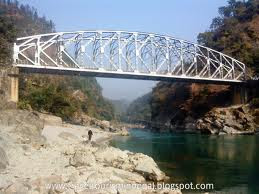palpa is very beautiful and good place.palpa's shreenagar,madifat and Ranimahal very femas in a nepal.
tansen is palpa's maket area .palpa is very good place for visit.Tansen is a hill town with a long history: Sen dynasty and empire, exiled aristocrats from Kathmandu and regal regional governors; enterprising Newar traders and craftspeople and the rich culture of the Magar people and other groups who make up the town and area's population combine to make Tansen unique in Nepal. The town is situated on the southern slope of Shreenagar Hill at an elevation of 1372 metres. From its ....
perch on the hill, the town looks out to the Madi Valley, surrounding hills and the Tarai. With views of the Himalaya from Shreenagar and rich natural environment all around, Tansen is one of the most scenic places in Nepal. As a gateway to Palpa and surrounding areas, it offers access to Palpa's variety and character of rural life, small towns, religious and historical sites. Though it boasts a busy market and is a centre in Western Nepal and the headquarters of the Palpa district, Tanse
tansen is palpa's maket area .palpa is very good place for visit.Tansen is a hill town with a long history: Sen dynasty and empire, exiled aristocrats from Kathmandu and regal regional governors; enterprising Newar traders and craftspeople and the rich culture of the Magar people and other groups who make up the town and area's population combine to make Tansen unique in Nepal. The town is situated on the southern slope of Shreenagar Hill at an elevation of 1372 metres. From its ....
perch on the hill, the town looks out to the Madi Valley, surrounding hills and the Tarai. With views of the Himalaya from Shreenagar and rich natural environment all around, Tansen is one of the most scenic places in Nepal. As a gateway to Palpa and surrounding areas, it offers access to Palpa's variety and character of rural life, small towns, religious and historical sites. Though it boasts a busy market and is a centre in Western Nepal and the headquarters of the Palpa district, Tanse





